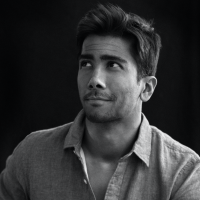

Lens flares! Incredibly effective at bringing more interest to an otherwise bland image, and perhaps just as effective at showing a photographer/retoucher doesn’t know what they’re doing if they’re placed wrong in post. So it begs the question, if one wants a lens flare in the image and it hasn’t been created in camera, when is it appropriate, and how do we get them to look real? Aaron Nace has your answers – quelle surprise.
In this tutorial, Aaron will show you in about the time it takes to medium boil an egg, how to create and manipulate a lens flare in Photoshop, and how to think about the approach so you don’t put a flare in a place where it doesn’t belong.

Simply, a lens flare is only going to appear in an image when there is a light source in front of the camera, pointing in its direction. If the light source is front lighting the subject, and pointing away from the camera, then there will be no flare – it requires backlighting. In the example image used, there are two large lights that are perfect candidates for flare additions.
[REWIND: Using Color Theory To Make Your Photos More Appealing & Harmonious With Photoshop]

First step is to create a stamp visible layer (Ctrl/Cmnd+Shift+Alt/Opt+E), which is a total copy of the entire image (and edits thus far), then Filter>Render>Lens Flare. In the dialogue box that appears, you can move the flare around to a position that suits, but keep in mind it makes most sense to keep the flare above/near the light source. At this point, you can choose types and intensity of flares also.
This is where this gets interesting. Once you’ve applied it to the layer, it won’t look very real, but the flare will be locked to the image layer so you can’t edit it alone. To do this, you’ll simply hit Shift+Delete and fill layer with Black. Then go to the Filter menu and select the very first option which will repeat the last filter you’ve applied – in this case, it’s the flare. Then, select Screen blending mode which will cause the blacks to vanish, and you’ll have a flare above the background image to be adjusted as you like. You can adjust the color, opacity, and Aaron recommends adding some Gaussian Blur to bring a better sense of realism. Brilliant, and easy.

As always, if you are a fan of Aaron’s teachings (and who isn’t?), be sure to check back here for updates, and follow along with Aaron on YouTube and Phlearn. You should also consider becoming quickly adept at Photoshop with the Phlearn Photoshop 101 & 201 sets as they are extremely comprehensive, and will have you quickly doing things with Photoshop you may have otherwise thought too complex, or didn’t even know you could do.





Get Connected!